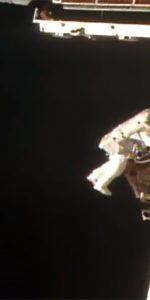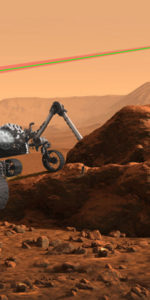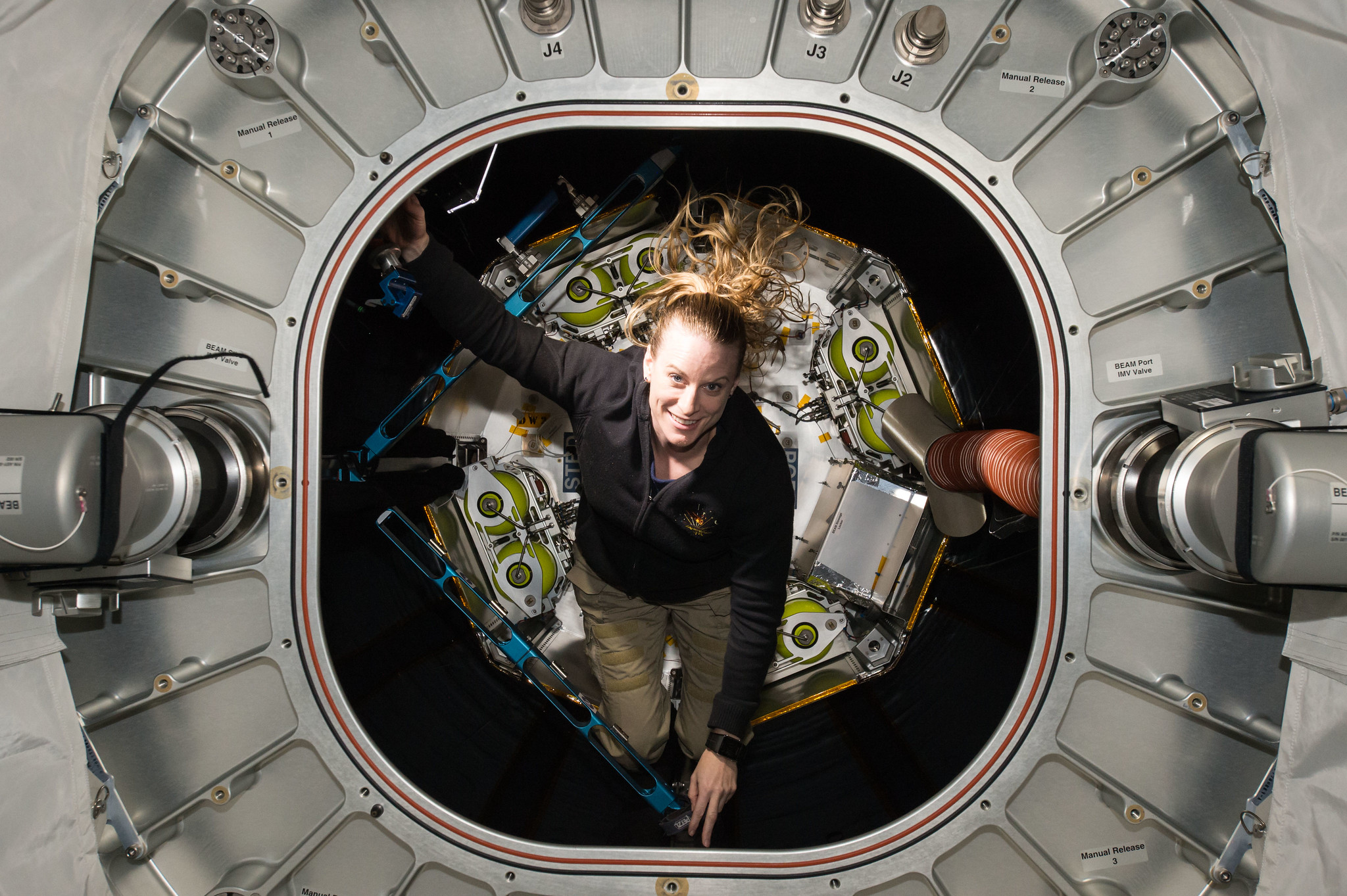
The candles will burn brightly for Kate Rubins’ next birthday. When the PhD cancer biologist-turned-astronaut hits 42 on 14 October, she will be serenaded by the blazing engines of a Soyuz-2.1a booster as it propels Rubins and her Soyuz MS-17 crewmates Sergei Ryzhikov and Sergei Kud-Sverchkov towards a six-month tour of duty aboard the International Space Station (ISS). With two previous missions between them, almost three hundred cumulative days spent in orbit, and two spacewalks—to say nothing of the fact that Rubins and Ryzhikov already spent a few days together in space, back in October 2016—this crew will form the core of Expedition 64, the first-ever seven-member increment to occupy the sprawling multi-national orbiting outpost.
On Wednesday, 1 July, suitably socially-distanced from each other and from the media, Rubins, Ryzhikov and Kud-Sverchkov appeared via video link to discuss their forthcoming mission and take questions from the media and the general public.
It has been a relatively short period of time since they were formally assigned to Soyuz MS-17 at the beginning of June. And whereas Ryzhikov has completed backup duties for no fewer than three Soyuz missions in the last year—including the recent Soyuz MS-16, which launched in April—Rubins and Kud-Sverchkov were assigned directly to this crew with no backup assignment immediately prior.
Born in Farmington, Conn., on 14 October 1978, Rubins grew up wanting to be “in order, an astronaut, a geologist and a biologist”. Her initial aspiration in achieving her first goal was to become a fighter pilot, but she was instead introduced to public health prevention of HIV in high school and a DNA conference carried her career into the biological sciences. She received her degree in molecular biology from the University of California at San Diego, then entered the Infectious Diseases Laboratory at La Jolla’s Salk Institute for Biological Studies to analyze HIV integration mechanisms.
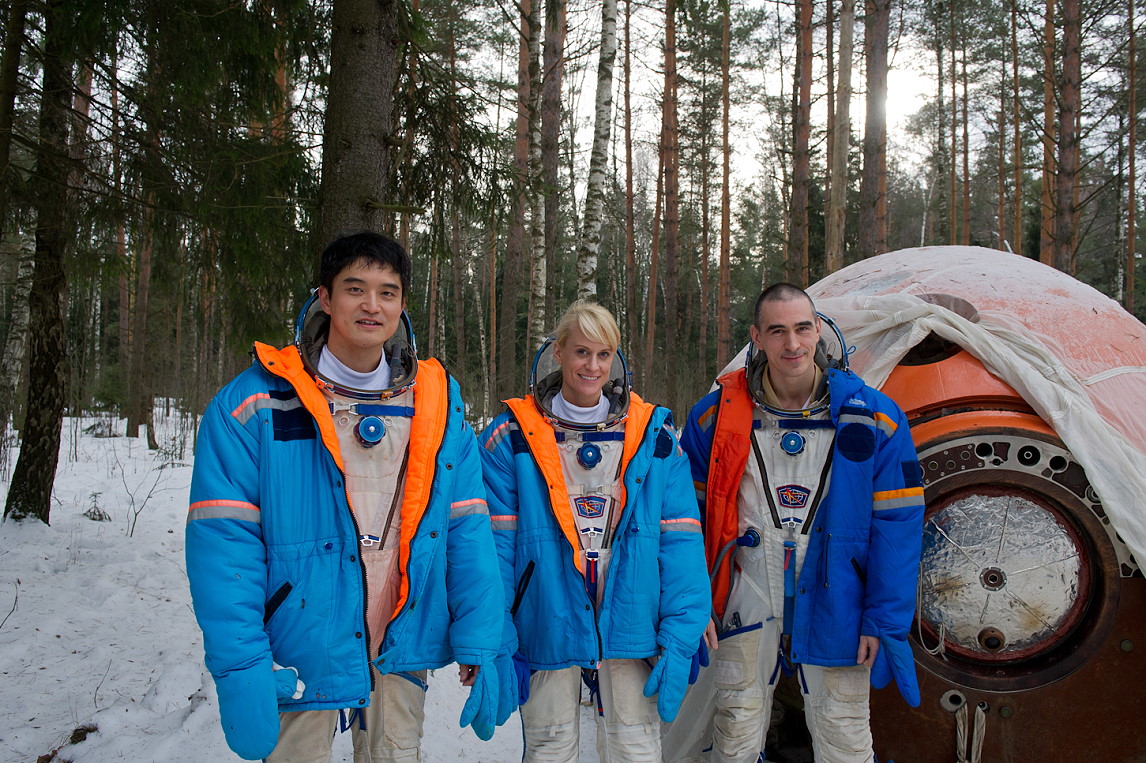
During this period, Rubins earned a doctorate in cancer biology from Stanford University and worked with the U.S. Army and the Centers for Disease Control and Prevention to develop the first model of smallpox infection. She subsequently served as a principal investigator at the Whitehead Institute for Biomedical Research at MIT in Cambridge, Mass., leading a team with an emphasis upon viral diseases in Central and West Africa.
Rubins’ work included the genome sequencing and therapy development for the Ebola and Marbug filoviruses and Lassa Fever. A scuba diver and triathlon competitor, as well as a keen aviator and parachutist, she was picked as a NASA astronaut candidate in June 2009.
Rubins completed her first mission in 2016, launching aboard the first upgraded Soyuz-MS vehicle in early July and returning to Earth the following October, to complete 115 days in space. Flying shoulder-to-shoulder with Russian cosmonaut Anatoli Ivanishin—with whom she will reunite for a few days in October—and Japan’s Takuya Onishi, their stay on the ISS as part of Expeditions 48/49 was packed with more than 275 experiments in molecular and cellular biology, human physiology, fluid and combustion physics, Earth and space science and technology development. Notably, Rubins was the first person to sequence DNA in space, eventually sequencing two billion base-pairs of DNA during a series of investigations to analyze sequencing in microgravity.
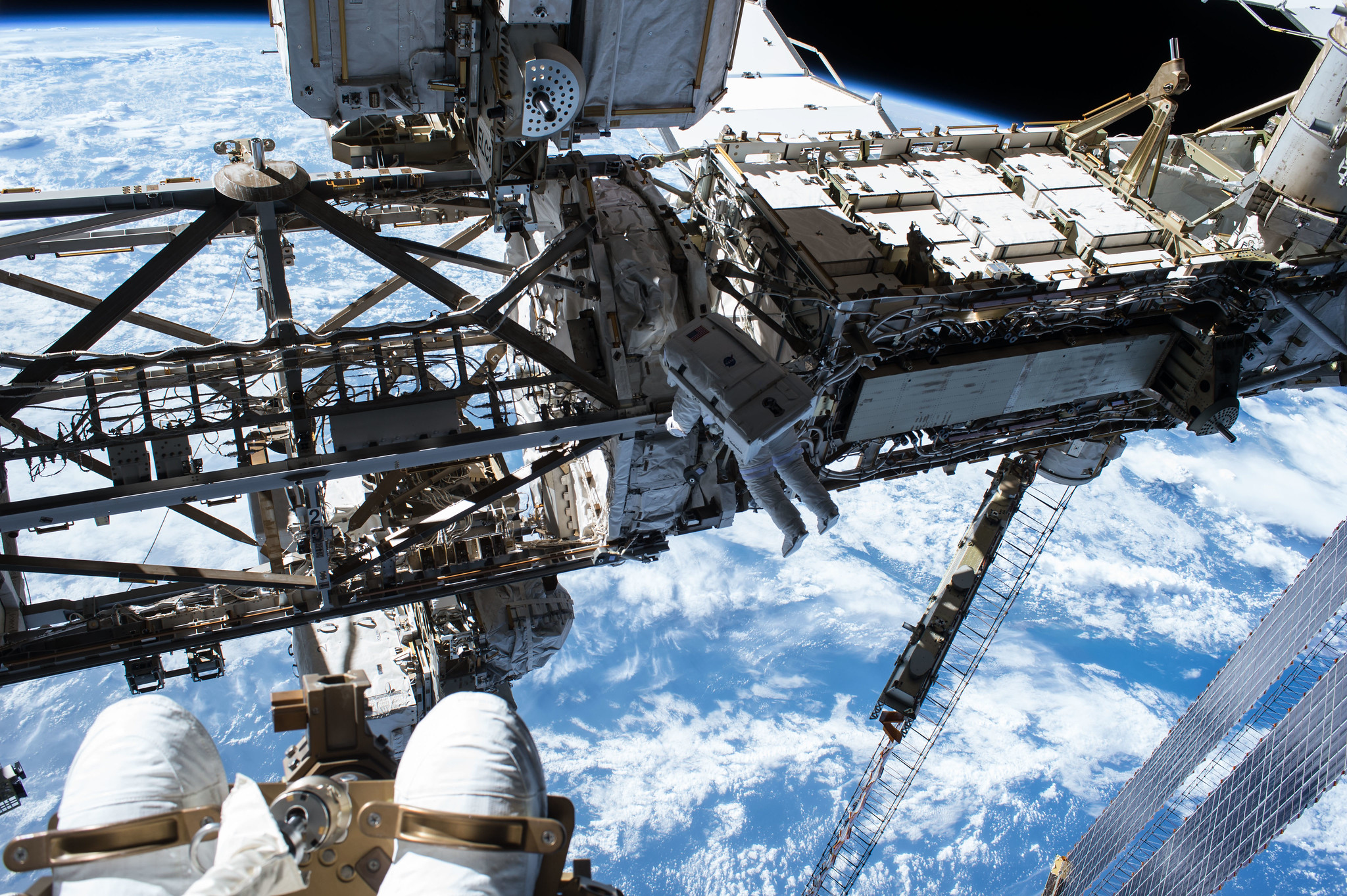
Together with Expedition 48 Commander Jeff Williams, she also performed two sessions of Extravehicular Activity (EVA), totaling 12 hours and 46 minutes, during which they installed International Docking Adapter (IDA)-2—currently in-use by Dragon Endeavour—and retracted the Trailing Thermal Control Radiator (TTCR) on the port-side P-6 truss. And during her remarks on Wednesday, Rubins recalled that spacewalking time as a highlight of her first mission. “You don’t realize what it’s like,” she said of the ISS, “when you’re inside it”, adding that she snapped a photograph of Williams with the enormity of the space station directly behind him.
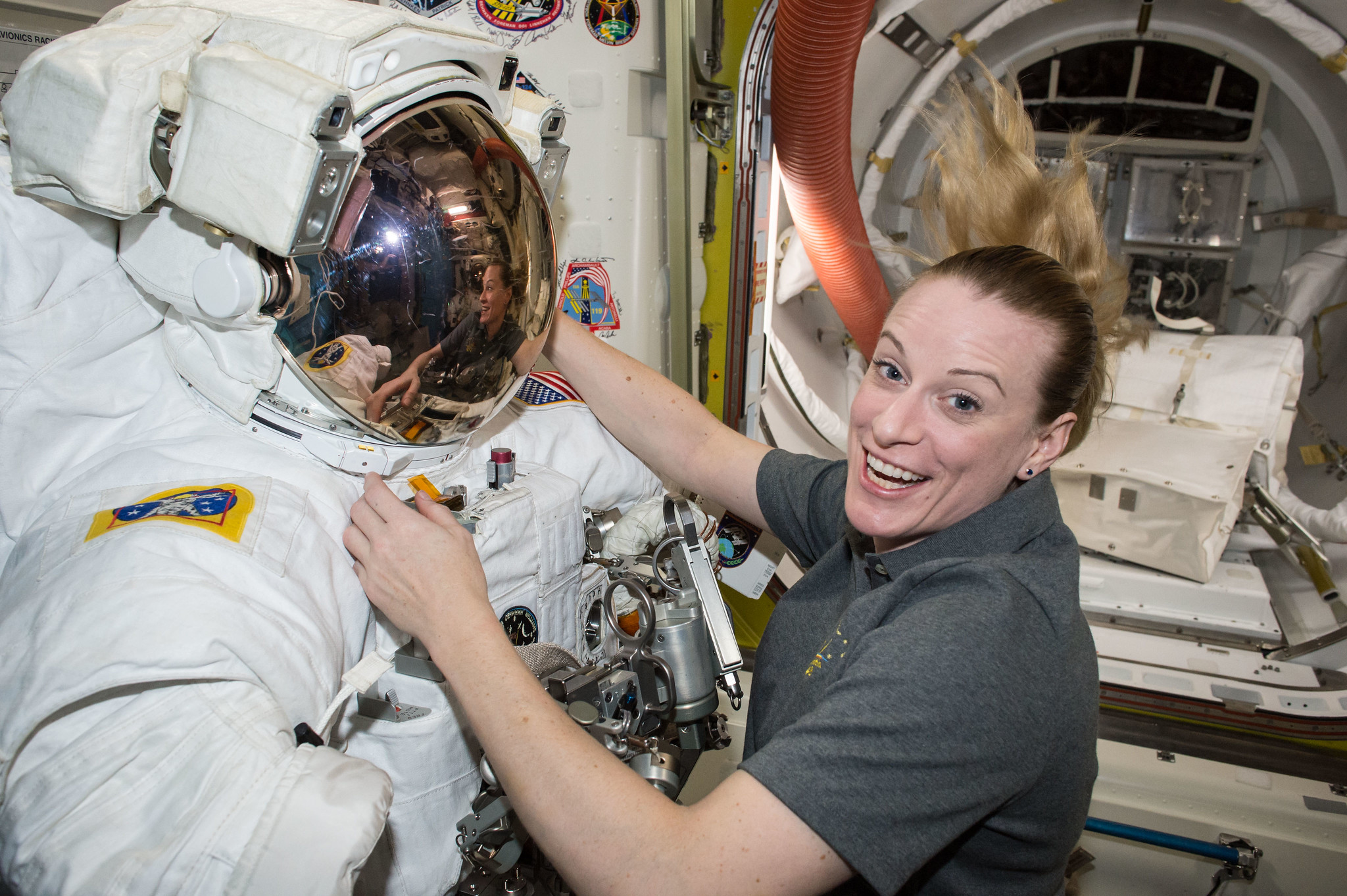
When Soyuz MS-02 launched in October 2016, for a few days, Rubins got to experience space with cosmonaut Sergei Ryzhikov. Born in the town of Bugulma, in today’s Republic of Tatarstan, on 19 August 1974 Ryzhikov graduated from the Kachin Higher Military Aviation School and became a pilot-engineer in the Russian Air Force. He then spent a decade in a diverse range of aviation assignments, flying L-39 high-performance jet trainers and MiG-29 fighters.
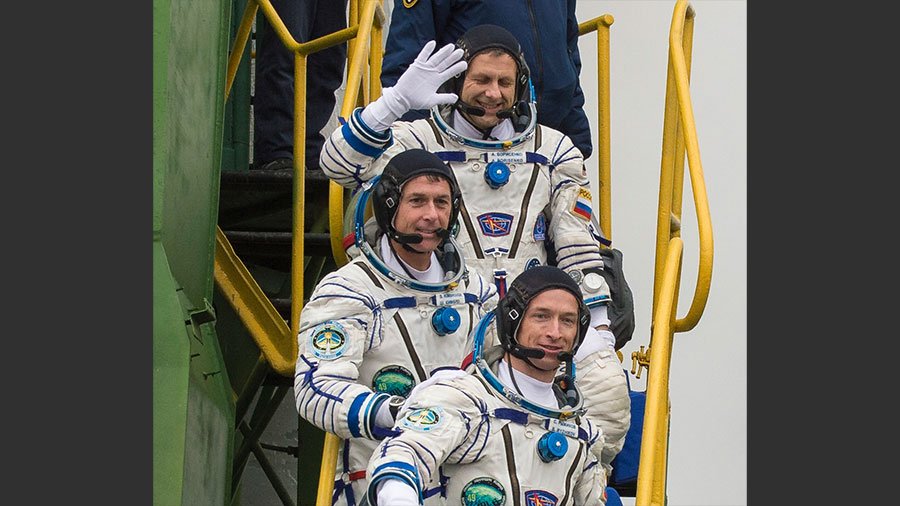
He was selected for cosmonaut training in October 2006 and his first assignment was to the backup crew of Soyuz TMA-20M, which flew in March-September 2016. Ryzhikov launched on 19 October of that year aboard Soyuz MS-02, alongside Russian cosmonaut Andrei Borisenko and NASA’s Shane Kimbrough, and went on to spend 173 days in space as part of Expeditions 49 and 50. Returning to Earth in April 2017, he then completed no fewer than three backup assignments, in support of last year’s Soyuz MS-13 and MS-15 missions and the current and ongoing Soyuz MS-16.
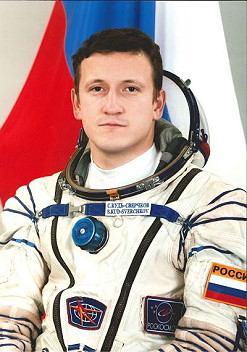
With Ryzhikov commanding Soyuz MS-17 from the spacecraft’s center seat, and with Rubins to his right in the Flight Engineer-2 couch, the left-hand Flight Engineer-1 couch will be occupied by “rookie” cosmonaut Sergei Kud-Sverchkov. Born at the Baikonur Cosmodrome in Kazakhstan—Russia’s premier spaceport—on 23 August 1983, Kud-Sverchkov graduated from Moscow State Technical University in 2006 with a degree in rocket engineering. He went on to gain employment at the RSC Energia design bureau, where he remained until he was selected for cosmonaut training in April 2010, alongside his soon-to-be crewmate Ivan Vagner. This mission will be Kud-Sverchkov’s first assignment in any capacity and he is one of the rarity of cosmonauts to have never completed a backup duty before rotating into a prime crew.
For her own part, Rubins has only just come off a duty as NASA’s director of operations in Star City, a post she held throughout 2019. And when she launches from Baikonur on 14 October, she will become one of only very few spacefarers to have launched on their birthday. “I’m a biologist,” she told yesterday’s news conference. “I tend to get really excited about growing cells and culture.”
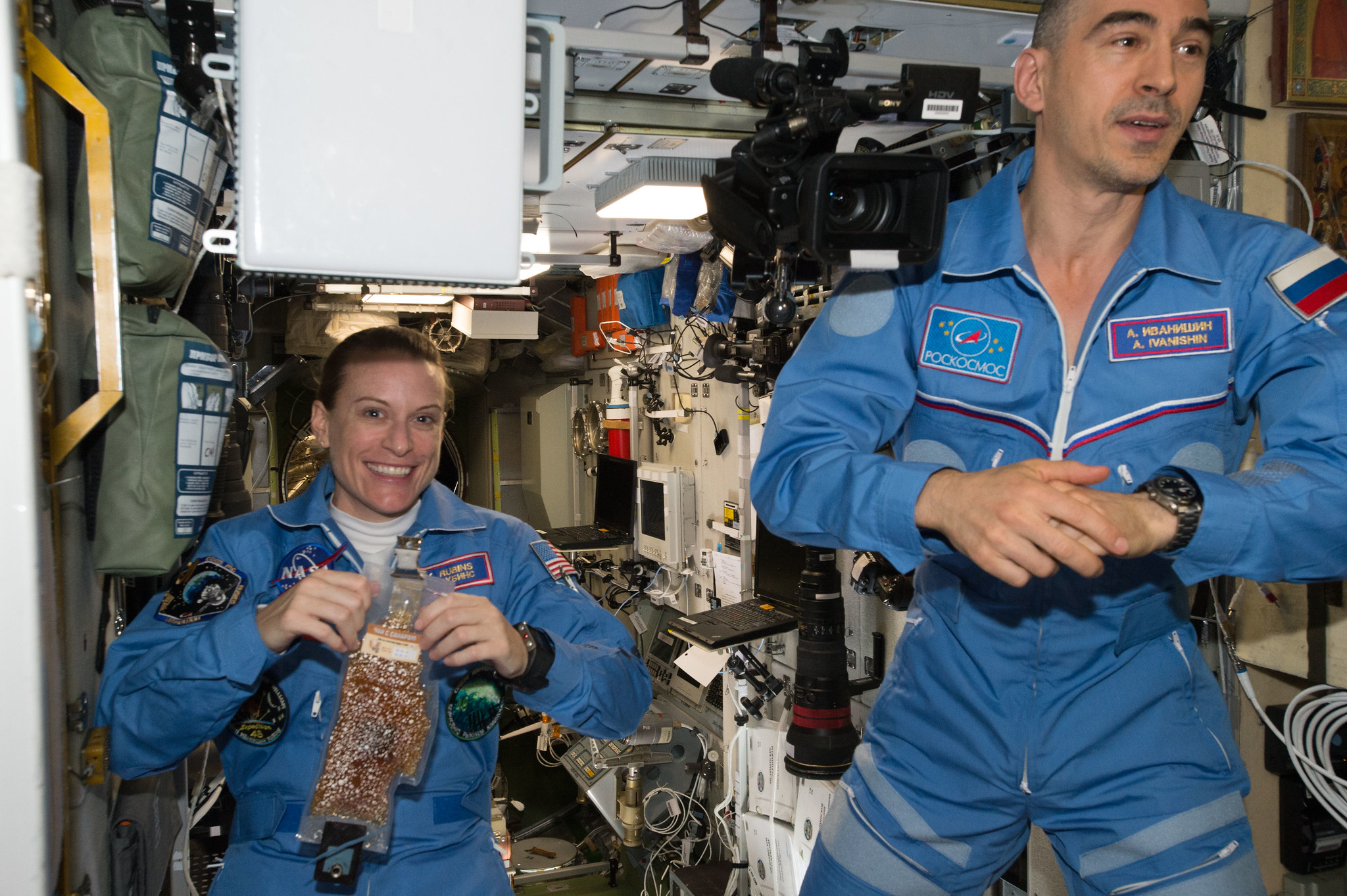
On her first mission in 2016, she found that moving around in space—during which she found herself initially clinging to hand rails for stability—took two to four weeks to figure out fully. It was “not so much a lesson, but the ability to work in space”, she said, as well as developing the spatial awareness to assemble a new experiment or piece of hardware whilst ensuring that its pieces were tied or Velcroed down and did not float away from her grasp.
With U.S. astronauts Mike Hopkins, Victor Glover and Shannon Walker, together with Japanese veteran Soichi Noguchi, slated to ride a Crew Dragon on its first Post-Certification Mission (PCM-1) as early as mid-September, Rubins, Ryzhikov and Kud-Sverchkov can expect theirs to become the first ISS expedition to have as many as seven astronauts and cosmonauts. And when Soyuz MS-16 returns in the second half of October, Ryzhikov will rotate into the command of Expedition 64 through April 2021.
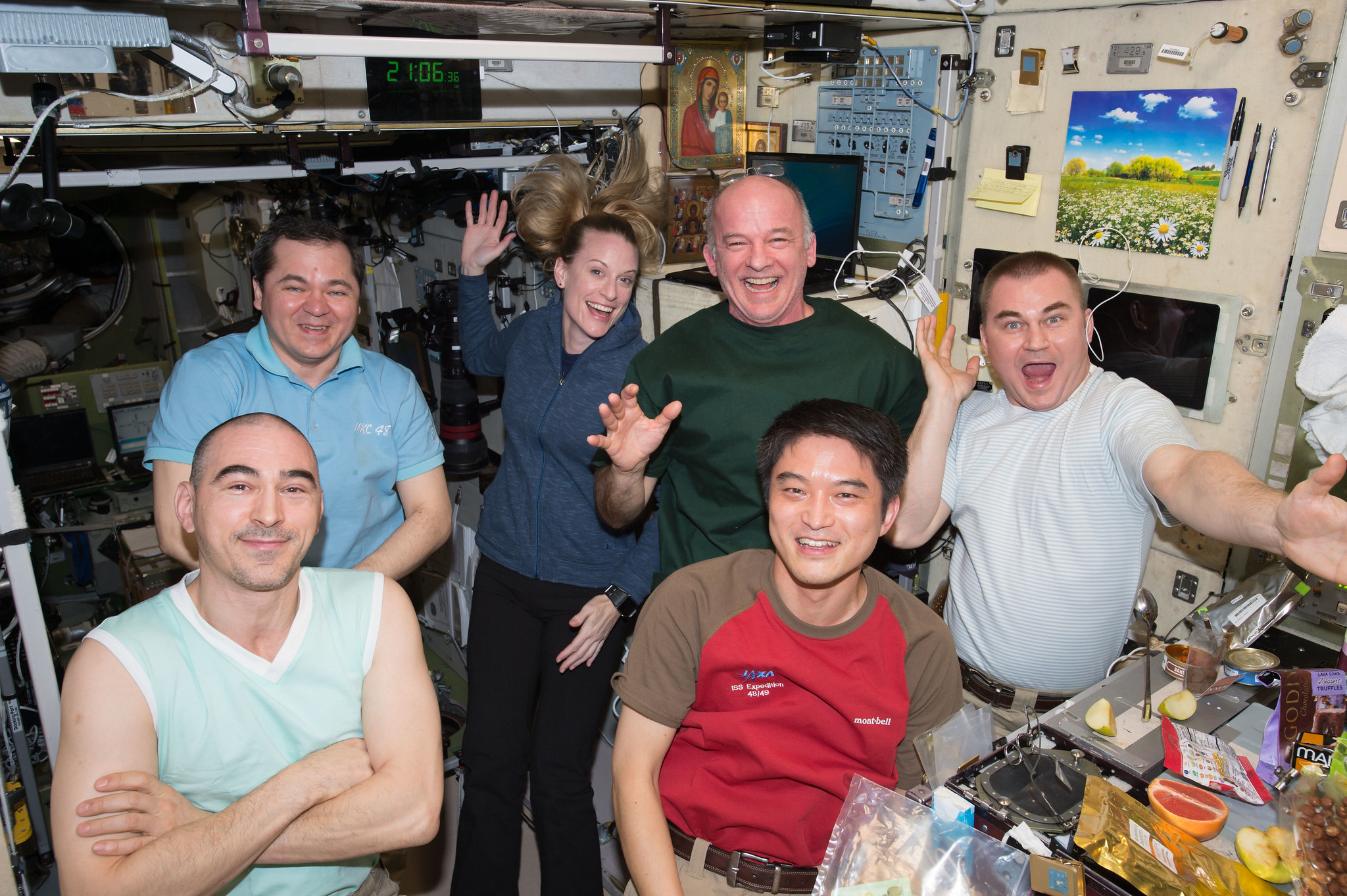
Rubins noted that it will be “incredible to have seven people on the space station” and expects to conduct “a large amount of science right out of the gate”. She anticipates that a larger crew will pay dividends in terms of preparing for exploration of the Moon and missions farther afield to Mars, through testing enhanced carbon dioxide atmospheric scrubbing systems, exploration systems, new types of atmospheric revitalization systems, improved space suit components and a greater science output.
She added that her crew’s training in the United States is almost done, after which they will head to Cologne, Germany, for European Space Agency (ESA) training, ahead of flying out to Star City and eventually Baikonur in the late summer for launch preparations. Kud-Sverchkov, who is going through the training regime for the first time, pointed out that he is “intensely focused [on] the last period of training before launch” and expects to head to Baikonur about three weeks before launch. “We have very little time left.”
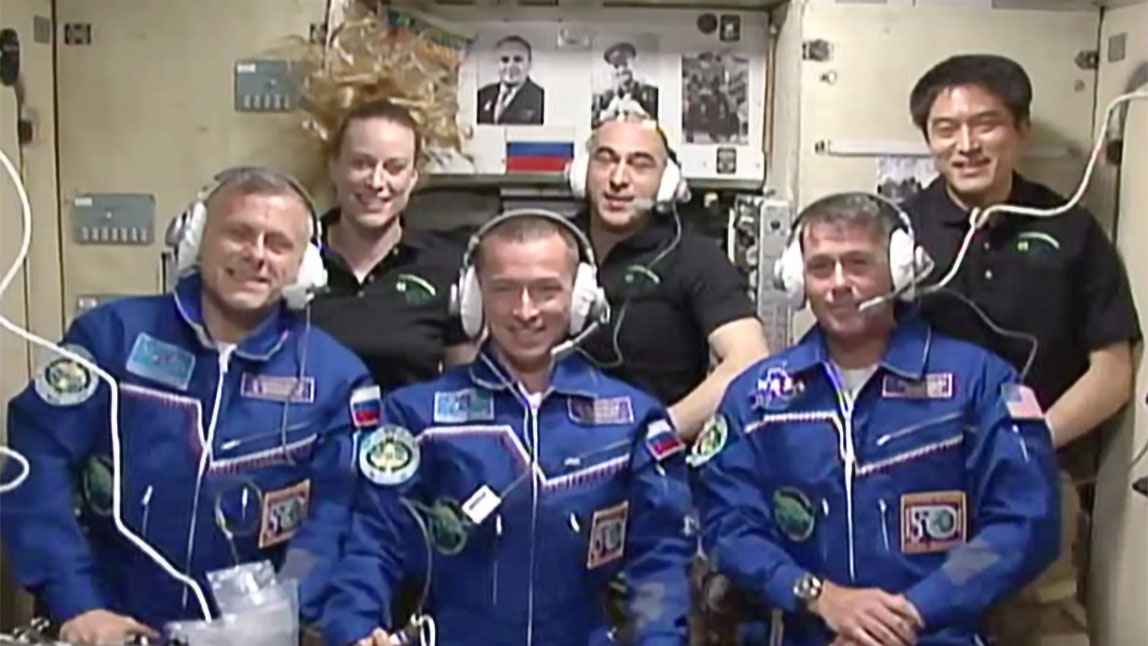
Asked about the language barrier, Rubins broke directly into Russian, much to the delight of her crewmates, with even the stern-countenanced Ryzhikov breaking into a hearty grin. She joked that they frequently switch between languages during training, which “confuses our instructors occasionally”. Kud-Sverchkov also praised his U.S. crewmate’s Russian language skills, explaining that the “mutual understanding in our crew is fantastic”.
Homesickness and missing family, clearly, affects any space traveler, and Rubins told her “remote” audience that the crews have email, voice-over-internet telephone and internet chats with loved ones during their increment, as well as care packages sent up periodically. Hers is expected to include a set of plastic science equipment for her to play with. For Ryzhikov, he thinks of loved ones when he looks down at familiar places on the planet and imagines himself back there once more.
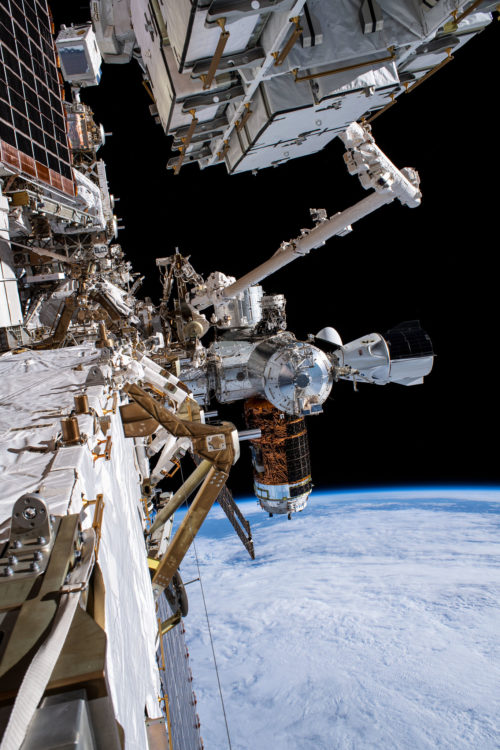
And as the ISS approaches 20 years of permanent habitation this coming November, Rubins was most proud of the “intangible benefit” that this immense project was done internationally. For his part, Ryzhikov spoke little during the press conference and, in true commander’s clipped tones, he described his ardent hope that the mission would “start well and finish well”.
Assuming an on-time launch on Rubins’ 42nd birthday and a targeted return to Earth around 18 April of next year, this crew can anticipate 186 days in space. Up to two Russian EVAs are potentially planned for Ryzhikov and Kud-Sverchkov, the first in October, shortly after their arrival on the ISS, and another in the early part of 2021. SpaceX’s new Dragon v2 cargo vehicle is expected to undertake its first two voyages in October and March, with the second uncrewed test flight of Boeing’s CST-100 Starliner craft anticipated late in the year, together with the arrival and departure of Russian Progress cargo ships.
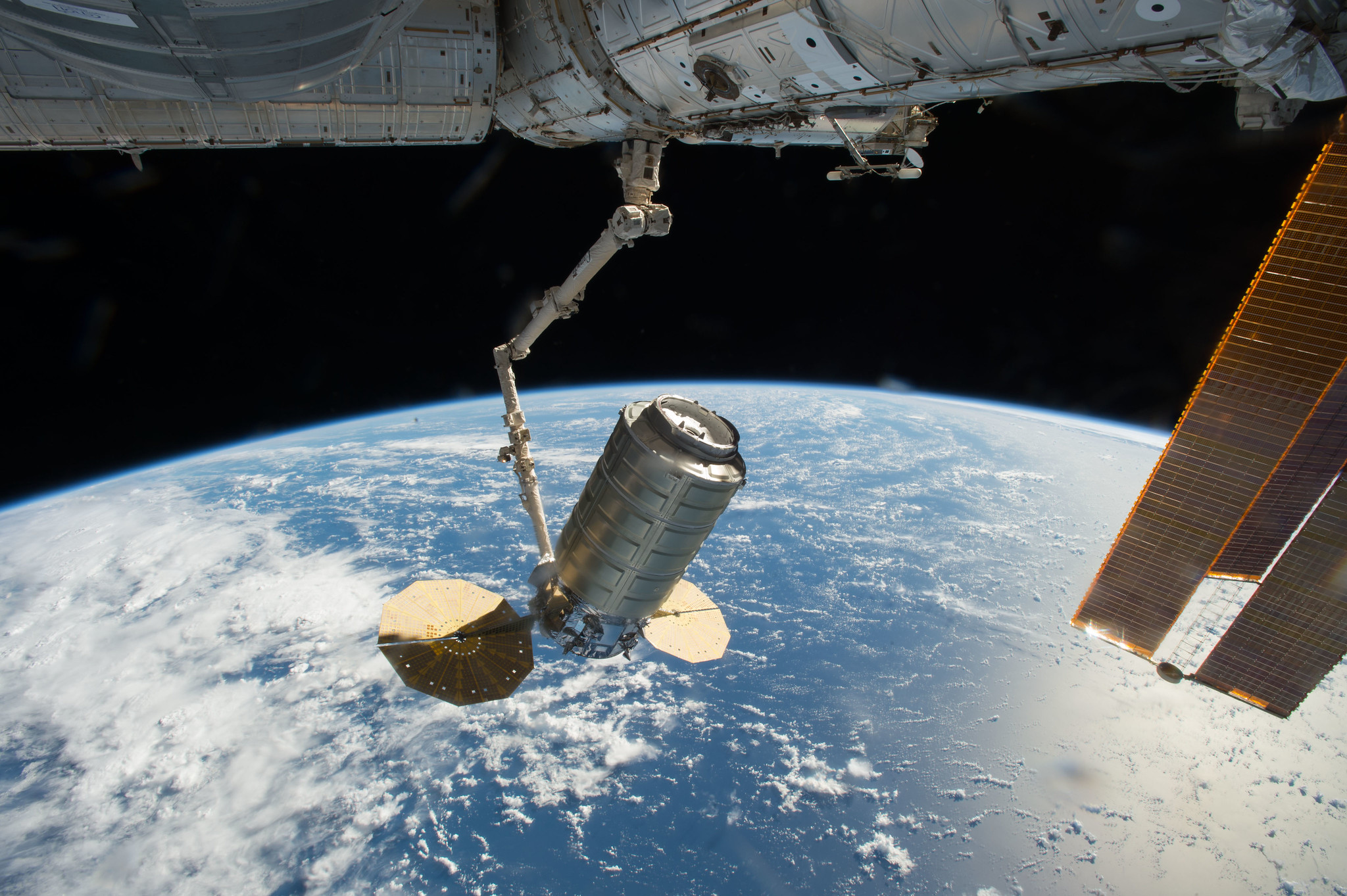
Moving into 2021, Northrop Grumman Corp.’s next Cygnus is slated to launch in February, around the same time as the return of Crew-1 astronauts Hopkins, Glover, Walker and Noguchi. This will be followed shortly thereafter by the arrival of another Crew Dragon, bearing the PCM-2 crew, which is expected to include Russian cosmonaut Andrei Borisenko and Frenchman Thomas Pesquet, together with two as-yet-unannounced NASA astronauts. This will restore Expedition 64 back up to seven-person capability for the final weeks of Rubins, Ryzhikov and Kud-Sverchkov’s increment.
FOLLOW AmericaSpace on Facebook and Twitter!
Missions » ISS »



